F-35S ENCOUNTERED CHINA’S J-20: HERE’S WHAT THE AIR FORCE SAID ABOUT IT
Posted: October 8, 2022 Filed under: Uncategorized | Tags: air supremacy, AL-31, China, F-22, F-35, Gen. Wilsbach, J-20, Su-57, US, WS-10C, WS-15 23 CommentsAlex Hollings | October 4, 2022
American F-35 Joint Strike Fighters had at least one close encounter with China’s 5th-generation J-20 over the Pacific in March of this year, and the response from Air Force officials has been somewhat mixed.
While the commander of Pacific Air Forces described the fighter itself as “nothing to lose sleep over,” he qualified his dismissive statements with positive observations about how Chinese forces are operating their first stealth aircraft.
“It’s a bit early to say what they intend to do with the J-20, so really all we’ve seen it do is air superiority,” explained Pacific Air Forces commander Gen. Kenneth Wilsbach in a March video uploaded by the Mitchell Institute for Aerospace Studies.
“But we notice that they are flying it pretty well. We recently had – I wouldn’t call it an engagement – where we got relatively close to the J-20s along with our F-35s in the East China Sea, and we’re relatively impressed with the command and control associated with the J-20.”
The first stealth fighter born outside of the US (sort of)
J-20 Mighty Dragon (Wikimedia Commons) (image omitted)
Despite Russia’s Su-57 Felon beating China’s J-20 into the air in 2010, Russia’s limited defense budget and struggling economy have resulted in slow progress and numerous setbacks for its stealth aircraft program. As a result, China’s Chengdu J-20 Mighty Dragon, which flew for the first time in 2011, managed to beat the Su-57 into service by a three-year margin in 2017. Since then, China’s produced as many as 150 stealth fighters, rapidly eclipsing Russian Su-57 production and placing China squarely in second place in terms of global stealth fleets.
The J-20’s roots date back to China’s J-XX program which began in the late 1990s. By 2008, some 11 years after the F-22 Raptor’s first flight, Chengdu’s Project 718 was chosen to move forward as the basis for the country’s first stealth fighter. Nevertheless, the design chosen would see significant revisions in 2014 before being declared “combat ready” and put into production in 2017.
F-35 (top), J-20 (bottom) (image omitted)
Like many of China’s aircraft, evidence suggests the J-20 was not designed from scratch. The aircraft appears to borrow heavily from earlier stealth fighter programs out of both the United States and Russia — specifically, America’s F-35 and F-22 programs and Russia’s now-defunct MiG 1.44. But while comparisons to the MiG are based mostly on design similarities, comparisons to American fighters are based on China’s access to a plethora of design documents from both programs.
In August of 2014, a Chinese national living in Canada named Su Bin (who also often went by Stephen Su) was arrested for leading a hacking effort to steal over 630,000 files from American aviation firms like Boeing and Lockheed Martin for the Chinese government, including F-22 and F-35 “blueprints” that would “allow [China] to catch up rapidly with U.S. levels … [and] stand easily on the giant’s shoulders,” according to his own emails that were entered as evidence.
How does the J-20 compare to American stealth fighters?
Chengdu J-20 (Wikimedia Commons)
The single-seat, twin-engine Chinese fighter has a wingspan of just more than 42 feet, a bit shy of the F-22’s 44′, and an overall length of 69 feet 7 inches, considerably longer than the F-22’s 62′. China has struggled to field the jet’s intended 5th generation engines, known as WS-15s, which are expected to produce some 44,000 pounds of thrust each. As a result, many of today’s J-20s fly with either Russian-sourced AL-31s capable of producing 33,000 pounds of thrust each, or more recently, China’s own equivalent, the WS-10C.
A pair of Chengdu J-20 Mighty Dragons (Wikimedia Commons) (image omitted)
The aircraft’s top speed is rated as Mach 2, with a combat range of 1,100 nautical miles, and a service ceiling of 66,000 feet. It’s capable of carrying four medium or long-range missiles inside its primary payload bay, as well as two additional short-range air-to-air missiles in small secondary bays on either side of its fuselage.
The J-20 is often compared to America’s air superiority F-22 Raptor, but technically speaking, it was designed to fill a different role. While the Raptor was always intended to dominate air combat, the J-20 was originally meant to fly deep into enemy territory to conduct strikes against ground targets, more akin to the F-35.
“It’s not anything to lose a lot of sleep over,” General Wilsbach told the press earlier this month.
“Certainly, we’re watching them closely and seeing how they felt and how they operate them.”
The J-20 is still evolving — both in terms of technology and capability
J-20 Mighty Dragon (Wikimedia Commons) (image omitted)
China has devoted considerable energy and resources to closing the air-combat capability gap presented by the F-22, incorporating new systems like thrust-vector control into the latest iterations of the aircraft to make it a more dynamic dogfighter. Recently, the J-20 has been leveraged in exercises that emphasize this air-to-air role, as China sees the fighter as its primary means of countering American stealth jets like the F-22 and F-35.
“We’re seeing relatively professional flying and it’s still too early to tell exactly what they intend to do with [the J-20] – whether it’s going to be more like an F-35 that’s capable of doing many, many missions or more like an F-22 that is primarily an air superiority fighter that has an air-to-ground capability,” according to General Wilsbach.
The J-20’s air-to-air capabilities are bolstered by a growing array of weapon systems, and in particular, by the PL-15 long-range air-to-air missile. The PL-15 can achieve speeds above Mach 4 via its dual-pulsed solid-fuel rocket motor and is said to be able to engage aircraft, drones, and even cruise missiles at ranges as far as 120 miles.
Of course, actually hitting an airborne target from those ranges is no small undertaking. In order to keep tabs on fast-moving targets while en route, the PL-15 leverages a mid-course two-way datalink to bolster its miniature active electronically scanned array radar seeker with updates from nearby Command & Control aircraft like China’s Shaanxi KJ-500.
“Some of their very long-range air-to-air missiles are aided by that KJ-500. Being able to interrupt that kill chain is something that interests me greatly.”
Source: SANDBOXX “F-35S ENCOUNTERED CHINA’S J-20: HERE’S WHAT THE AIR FORCE SAID ABOUT IT”
Note: This is SANDBOXX’ article I post here for readers’ information. It does not mean whether I agree or disagree with the article’s views.
China Confirms Pressing J-20 Mighty Dragons Into Action; Fighter Pilot Says Can Search & Track All Stealth Jets
Posted: August 18, 2022 Filed under: Uncategorized | Tags: China, F-22, F-35, J-20, PLA air force, search & track, vector thrust, WS-10C 49 CommentsBy
Sakshi Tiwari
August 16, 2022
As the struggle between China and the United States (US) intensifies, a Chinese J-20 fighter pilot has made intriguing revelations about the PLA Air Force’s (PLAAF) fifth-gen warplane.
A publication linked to the Chinese military, the People’s Liberation Army Daily, has revealed that a J-20 fighter pilot Yang Chunlei flew the warplane to identify foreign military aircraft that entered China’s East China Sea Air Defense Identification Zone (ADIZ) in July.
This assumes significance as it is the first time Chinese official sources have confirmed a J-20 was employed to identify foreign military planes in China’s ADIZ. It implies that the J-20 is entirely capable of detecting and recognizing the stealth fighter aircraft of other nations, according to China Daily.
Generally, an air defense identification zone is a unilaterally declared area where the claimant country tracks and identifies aircraft flying within that designated space. China’s ADIZ covers the entire East China Sea and overlaps with Japanese, South Korean, and Taiwan ADIZ.
The article said the Air Force was now “flying the routes that had not been flown and accessing the airspace that had never been reached” as it became capable of carrying out “both defensive and offensive operations.”
EurAsian Times reported in April 2022 that the J-20s were deployed to the East and the South China Sea for combat patrols. In addition, the fifth-generation stealth fighters also participated in the war games conducted in the aftermath of Nancy Pelosi’s visit to Taiwan earlier this month.
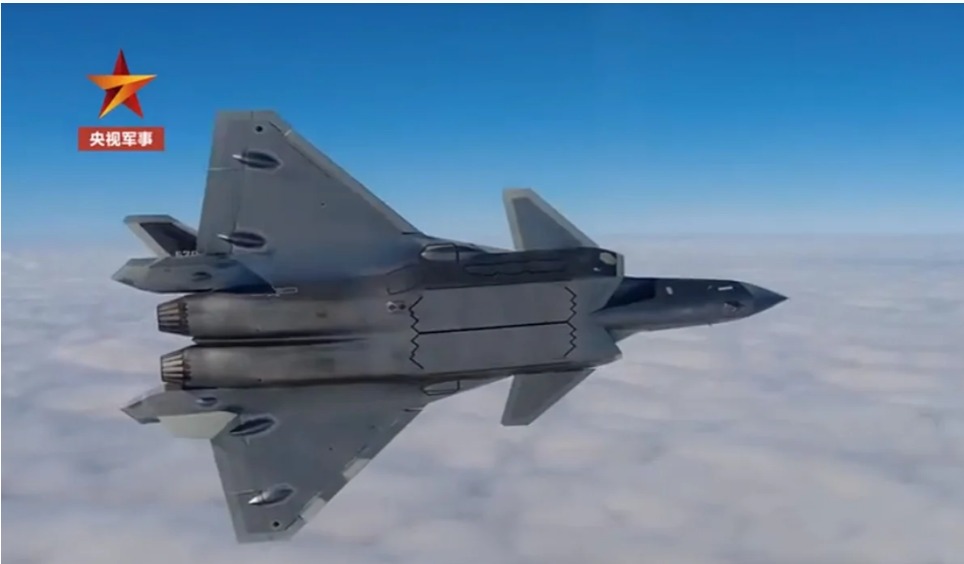
“When we first started our patrols, there were protests from some countries and provocations by foreign military aircraft,” J-20 pilot Yang Chunlei told PLA Daily in the context of the J-20s patrolling East China ADIZ.
“Since our air and sea forces turned the management of the East China Sea ADIZ into a routine, aircraft from most countries now basically fly in accordance with our protocols.”
However, the most intriguing part about the pilot’s comments was the J-20’s capability to search and identify other countries’ stealth fighters – a covert reference to the American F-22s and F-35s that often lurk over the Indo-Pacific.
J-20s Tracking The F-22s & F-35s?
In March 2022, US Pacific Air Forces Commander General Kenneth Wilsbach revealed that the US F-35 stealth fighter jet had a close encounter with China’s J-20 stealth fighter jets over the East China Sea. At the time, the Commander had sounded optimistic about the J-20’s capability. However, the J-20 pilot’s comment goes a step ahead.
According to the article, the J-20 has a photoelectric targeting system, a photoelectric distributed aperture system, and an airborne active phased array radar with a more extensive detection range. Both systems recognize foreign military aircraft, strengthening their capabilities when used together.
The J-20 will be better able to handle the problematic maneuvers of stealth fighters like the F-22 and F-35 jets stationed in Japan and the Republic of Korea because it has significantly improved recognition of foreign stealth fighter aircraft.
File Image: J-20 Fighter Pilot (image omitted)
EurAsian Times reached out to Indian Air Force veteran and former fighter pilot Vijainder K Thakur to understand how the J-20 would lock in on US stealth fighter jets.
“The J-20 locks in using its Opto electronic suite (OLS/IRST), which typically comprises forward-looking IIR, TV & laser range finding systems. Imaging Infrared Radar (IIR) & TV can identify a fighter at ranges as far as 80 kilometers on a clear day/night. Laser ranging gives the pilot the exact range. Most fighters, including our Su-30MKI, MiG-29, and Rafale, have it. China is believed to have a pretty capable OLS.”
File Image: F-35 Stealth Fighters (image omitted)
The Chinese article further claims that modern fighter planes are equipped with the capacity to destroy upon discovery, which allows them to lock onto a target and launch an attack immediately after they locate it. Accordingly, the J-20 is better equipped to handle any possible threats posed by F-22s and F-35s.
Examining the claims, Thakur told the EurAsian Times: “What the pilot is saying is this – Since the J-20 has good front aspect stealth, it can come close enough to an F-22 to detect, identify, track & lock on to it using its passive front aspect Opto electronic detecter. Like other modern fighters, the J-20 is equipped with long-range air-to-air missiles. So it would be possible for the J-20 to get the all-important first shot at the F-22.”
“The F-22 is a very effective platform for taking down adversary air defense systems in heavily contested airspace and establishing air dominance. However, the J-20 can effectively engage the F-22 using front aspect attack, particularly when the battlefront is small, as would be the case if the PLA were to assault Taiwan”, he added.
The radars of Taiwan failed to pick up the J-20’s course during military exercises conducted by the PLA around the island of Taiwan. Thus, the stealth ability of the J-20 has completed its field test, according to the China Daily.
The article further asserts that the Chinese military will have a strong chance of defeating the enemy’s stealth fighters should a military war break out.
J-20 vs F-22, F-35
As noted by EurAsian Times, the US participated in joint exercises with Japan using 12 F-22s and 4 F-35s. It was in response to an increase in “strategic coordination military flights” between China and Russia over the Sea of Japan and other naval maneuvers.
Philippines-based military analyst Miguel Miranda told the EurAsian Times: “I find descriptions of China’s air combat capabilities from “official sources” to be either superficial or vague.
When it comes to sizing up the J-20 compared with the F-22, both models have more similarities than differences, and they were both created for beyond-visual-range engagement. I must emphasize that many US analysts judge the Chinese air force/PLAAF as having reached parity with the US Air Force in BVR combat.
“What can ultimately decide the clash of the US and Chinese air power in the Asia-Pacific is whether a combination of networked air defenses, electronic warfare, space-based intelligence gathering, and area denial tactics will keep the USAF and Navy from contested waters near Taiwan.”
It is believed that J-20’s stealth technology was obtained from the F-35 Lightning II program through cyberattacks and computer hacking of private US defense contractors. However, the claims that Taiwan could not track its course during drills do account for something.
An F-35B Lightning II gets refueled during Valiant Shield 2022 (via Twitter) (image omitted)
China is putting efforts to up its game with the J-20 fighters. According to Chinese analysts, China’s technical gap with the United States has decreased in terms of jet engines, and cutting-edge technology like a higher thrust-weight ratio, vector thrust control, and variable cycle is probably in the works.
China had previously declared in January that it would start modernizing the engines of its J-20 stealth fighter jet this year to catch up to the performance of the American F-22 Raptor. The WS-10C engine, which was produced domestically and is currently being updated with thrust-vector technology, powers the J-20.
The thrust vector technology, which has been worked on for two decades in China, is supposed to add more teeth to the engine and enhance the maneuverability of the J-20 aircraft to match the capability of the American F-22.
Further, in General Wilsbach’s words, “We notice that they are flying it pretty well. We recently had – I wouldn’t call it an engagement – where we got relatively close to the J-20s along with our F-35s in the East China Sea, and we’re relatively impressed with the command and control associated with the J-20.”
So, while the claims in official Chinese publications are taken with a pinch of salt, the fighter pilot’s comments come at an opportune moment when tensions are rising in the Indo-Pacific amid the increased activity of stealth fighters fielded by opposing sides.
Source: EurAsian Times “China Confirms Pressing J-20 Mighty Dragons Into Action; Fighter Pilot Says Can Search & Track All Stealth Jets”
Note: This is EurAsian Times’ article I post here for readers’ information. It does not mean whether I agree or disagree with the article’s views.
With new operations on opposite sides of the world, Chinese military aircraft are showing off growing reach
Posted: April 29, 2022 Filed under: Uncategorized | Tags: China, J-20, WS-10C, WS-15, Y-20 9 CommentsChristopher Woody 6 hours ago (on April 28, 2022)
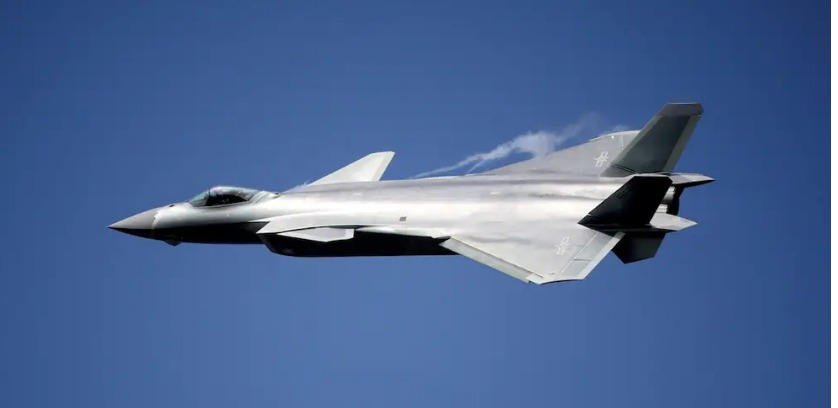
China is rapidly developing combat and transport aircraft to support longer-range military operations.
A flight to Europe by China’s Y-20 airlifter and regular patrols by J-20 fighters are milestones for those jets, officials say.
The new capabilities worry China’s neighbors, but China’s troops and hardware are largely untested in combat. (This reblogger’s note: All most advanced weapons are untested new ones as there has not been any war now that requires the use of such weapons in it.)
China’s military has rapidly built one of the world’s largest aviation forces, developing increasingly capable aircraft that the US Defense Department has warned are “gradually eroding” the US military’s advantage in the air.
In recent weeks, China’s premier fighter jets and strategically valuable airlifters have reached milestones that underscore Beijing’s increasing focus on and investment in military aviation.
In early April, six Y-20 cargo planes arrived in Belgrade to deliver what were believed to be Chinese-made HQ-22 surface-to-air missiles to Serbia’s military. The roughly 5,000-mile flight by what Chinese state media called “a record-breaking number” of Y-20s was seen as a demonstration of Beijing’s ambitions for global power projection. (This reblogger’s note: capabilities instead of ambition as China has no ambition for world hegemony. There has absolutely no evidence to prove China has any ambition for global power ambition.)
Days later, a top official with the Aviation Industry Corporation of China, the state-owned firm developing the J-20 fighter jet, said that J-20s are now conducting regular patrols over the East and South China seas, a sign of the advanced jet’s increasing reliability.
The developments are indications that China’s air force “is growing more confident in its ability to operate farther and farther from Chinese shores with newer and newer aircraft,” Timothy Heath, a senior international defense researcher at the RAND Corporation think tank, told Insider.
J-20 stealth fighter china
The AVIC official said the J-20s were routinely conducting alert patrols, which are mainly for surveillance, over the South China Sea and combat patrols, which require a higher level of readiness, over the East China Sea. The official said that had been made possible by the switch to a “Chinese heart” for the jets, a reference to domestically developed engines.
The J-20 was originally fitted with less powerful Russian-made engines. Some of the several dozen J-20s in service are now fitted with WS-10C engines, an upgraded version of an older Chinese-made engine, but China has struggled to develop the WS-15 engine specifically designed for fifth-generation aircraft like the J-20. The lack of engine power is expected to prevent the J-20 from adopting advanced weaponry and high-end operations. (This reblogger’s note: There is no evidence for such allegation of China’s lack of ability to develop advanced engines. China has struggled in developing WS10C and succeeded. China can also succeed in its struggle to develop WS-15.)
Chinese military officials have said the WS-15 would be finished by 2023 and would put the jet on par with the US’s F-22, but Heath said the upgrade shouldn’t be overstated, calling the WS-15 “at least a generation behind” the F-22’s engine. (This reblogger’s note: Heath has no data to prove his allegation.)
The WS-15 “has the usual Chinese problems of short maintenance schedules (This reblogger’s note: Common for new weapons. Do not forget both F-22 and F-35 have the problems of even shorter maintenance schedules. Due to maintenance requirements, in actual war, at most only one third of F-22s are combat ready), or just a short lifespan due to maintenance issues, and quality-control issues and general underperformance,” Heath told Insider. (This reblogger’s note: How short? Please provide the data. Heath has no data to support his speculation.)
Despite its shortcomings, the J-20 has left an impression on US commanders, who have noted that Chinese pilots are flying the J-20 “pretty well,” Gen. Kenneth Wilsbach, the head of US Pacific Air Forces, said in March.
It is “still too early” to tell whether the J-20 will be used as a multi-role fighter like the F-35 or be focused on air-superiority like the F-22, but China is showing it can employ the jet effectively, Wilsbach said, referring to a recent encounter in which “we got relatively close to the J-20s with our F-35s in the East China Sea and were relatively impressed with command-and-control that was associated with the J-20s.”
As with China’s bomber flights around Taiwan, there is a propaganda aspect to the J-20 patrols. They are “a demonstration of Chinese military muscle” that is not just directed at the US, Heath said. “It’s primarily directed at China’s own people, as well as to Chinese neighbors in the South China Sea.” (This reblogger’s note: Judge by Gen. Kenneth Wilsbach’s impression, it’s primarily directed at the US instead of China’s own people or Chinese neighbors as J-10 and J-11 are enough for that purpose.)
Logistics and heavy lift
A Chinese People’s Liberation Army Air Force Y-20 transport aircraft
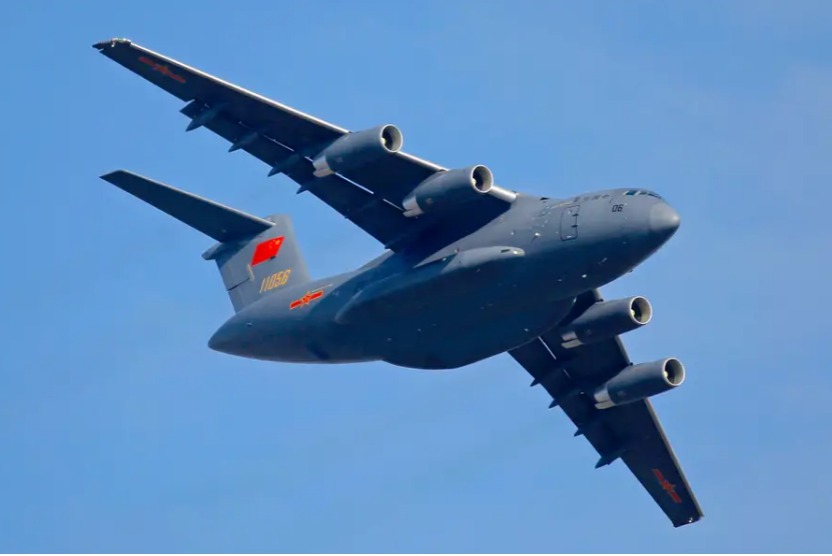
Like the J-20, the Y-20 has been operational for about a decade, and China has focused on developing the Y-20 fleet to support longer-range military operations.
Prior to the flight to Serbia, two Y-20s delivered more than 30 tons of supplies to Tonga after that country was devastated by a volcanic eruption and tsunami. The 6,000-mile flight was the longest known overseas mission for the Y-20, a former Chinese military instructor told the South China Morning Post.
In November, an aerial-refueling variant of the Y-20 took part in a military flight near Taiwan for the first time, demonstrating a capability considered essential to support longer-range and longer-duration flights by China’s fighters and bombers.
The expanding reach of Chinese military aircraft has been noticed across the Pacific, including in Australia, which US and Australian officials say faces a renewed threat of attack from Beijing. (This reblogger’s note: are the US and its ally so timid to feel threatened by Chinese warplances that are described by Heath as inferior to US ones?)
“If you look at those distances and how that’s been transported, it’s really captured the attention of folks in Canberra,” Patrick Cronin, Asia-Pacific Security chair at Hudson Institute think tank, said of the flight to Serbia.
Chinese Y-20 cargo planes delivering medical supplies to Wuhan
Y-20s delivering medical workers and medical supplies to Wuhan in February 2020. TPG/Getty Images
“This is exactly the kind of logistics and heavy lift that China’s building [and] that could use some of these facilities and access points that they’re putting money into,” Cronin said on a recent podcast, pointing a security deal recently signed by China and the Solomon Islands.
Long-distance flights to unfamiliar areas have training value but Chinese pilots already have experience conducting such operations in the older Russian-made Il-76 and Il-78 cargo planes that China’s military, the People’s Liberation Army, has used for decades, Heath said.
“The difference is they’re using the Y-20 more than the Il-76s and 78s, but it’s not a dramatic change,” Heath told Insider, adding that those missions “are really not designed to replicate” combat, with which most of China’s military does not have experience.
“I’m still not sure that the Chinese themselves know if they can deploy combat forces into a hostile country that is armed with the latest equipment, like surface-to-air missiles,” Heath said. “That’s a type of situation I just don’t see the PLA being well prepared to carry out at this point.” (This reblogger’s note: What is the need for China to deploy equipment in a hostile country since it seeks no world hegemony. In fact, China is now friendly to all nations in the world including the US. It is seeking win-win cooperation with the US. The US is hostile to China for fear of being replaced by China as world number 1 though China has no such ambition)
Source: Business Insider “With new operations on opposite sides of the world, Chinese military aircraft are showing off growing reach”
Note: This is Business Insider’s article I reblogged for readers’ information The article is full of misinformation. My comments have pointed out some of them for reader’s knowledge.
Challenging F-22 Raptors, China Plans To Amplify ‘Thrust Vectoring’ Capabilities Of Its J-20 Stealth Fighter Jets
Posted: January 21, 2022 Filed under: Uncategorized | Tags: China, F-22, J-20, US, WS-10C, WS-15 8 CommentsBy Sakshi Tiwari- January 21, 2022
China has often been accused of espionage and stealing American military technology, especially that of the F-22 Raptor, considered the most potent air-superiority fighter in the world.
While Beijing refutes all such claims, it has been certainly making efforts to match the capability of the fifth-generation American stealth jets, F-35 Lightning II and F-22 Raptor even as geopolitical tensions heat up in the Asia-Pacific region.
It has now emerged that China will begin upgrading the engines of its most advanced stealth fighter jet, the J-20, this year in order to bring its performance closer to that of the American F-22 Raptor.
It is believed that J-20’s performance has been limited due to the use of the WS-10C engine, a stop-gap arrangement. The WS-10C is an advanced variant of the basic WS-10 engine which is used on other fighters in the PLA Air Force inventory.
These WS-1OC engines have new thrust-vectoring nozzles, a technology that the Chinese engineers had been working on for two decades. This was first demonstrated at the 2018 Zhuhai air show. In the long run, the J-20 fighter jets are to be integrated with the WS-15 engines to match the Raptors.
A few days ago, a speculative report had emerged that the J-20 was flying with the WS-15 engine to test its capability. The assessment was apparently based on some leaked photos. The report had suggested that the J-20 was flying with a WS-15 and WS-10 engine. However, it could not be independently verified.
The WS-15 had been in the works for a while now, with the objective to power the J-20 as well as the J-31 (FC-31) fifth-generation stealth aircraft but a series of failed tests and evaluations have led to its deferment. This is the reason why China chose to integrate the WS-10C engines and is now upgrading the same.
The J-20 Engine Upgrade
A 2021 Pentagon report on the Chinese PLA submitted to the US Congress had stated that Beijing was carrying out upgrades to its J-20 fighter jets.
The report had then revealed that with the installation of indigenous WS-15 engines, the Chinese are adding a thrust-vectoring nozzle and an F-22-like “supercruise” capability. The thrust-vector technology allows the Raptor to alter the direction of engine thrust, allowing it to do abrupt maneuvers that previous generations of aircraft couldn’t.
Chinese engineers have been working on the WS-15 high-thrust engine to allow their most sophisticated fighter to reduce the gap on US warplanes. As of now, all WS-10C engines attached to J-20s will be given thrust vectoring capabilities this year, the latest report suggests
“Because verification of the two-dimensional thrust-vectoring nozzles, the technology used by the F-22, has been completed, the maneuverability and stealth capability of the J-20s will be upgraded,” a person familiar with the engine development program, told SCMP.
“The upgrading project aims at meeting the PLA’s intensive training demands, as the country plans to deploy about 200 J-20s.”
State broadcaster China Central Television aired footage this week of PLAAF J-20 aircraft conducting night-time combat training. Additional clips revealed the planes were equipped with WS-10C engines.
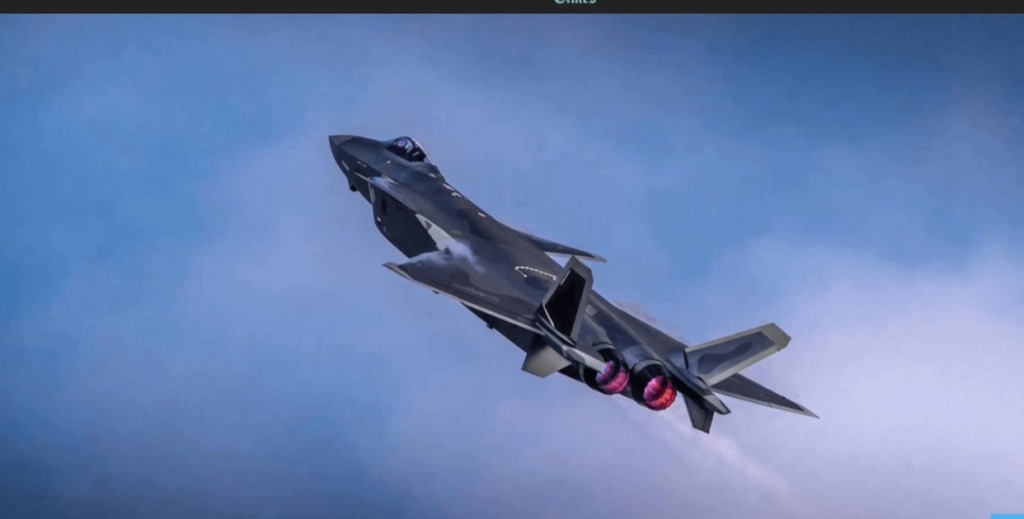
Macau-based military observer Antony Wong Tong said: “It’s the first time the PLA showed simulated dogfight drills between different J-20 brigades, which is supposed to be regular training for PLA fighter jet pilots.
According to the source quoted by SCMP, testing on the WS-15 engine is currently underway and will be completed next year. “The J-20 engines will be replaced by the WS-15 once the checks are completed,” the source said, adding there would be no technical problems because the existing Russian and Chinese engines were of similar size and shape.
Further, the state media has reported that the modern warplane has proven its operability in adverse circumstances, including high altitude, harsh cold weather, and high humidity and temperatures, since China’s J-20 stealth fighter jet switched to locally built engines.
This indicates that the current engines being upgraded with the vector technology is a prelude to the indigenous engine that will ultimately power the Chinese Mighty Dragons to match the American Raptors.
Can J-20 Match F-22 Raptor?
The American F-22 Raptors have super-cruise capability enabled by the thrust vector technology that the Chinese are imbibing, through upgrades and through a planned installation of the indigenous WS-15 engine.
The F-22 Raptors’ ability to achieve and maintain Mach speed without using an afterburner is referred to as ‘supercruise’. This is possible owing to the engine’s power and thrust. As a result, the jet can fly longer and carry out more detailed assault missions without having to refuel as frequently as a conventional fighter jet.
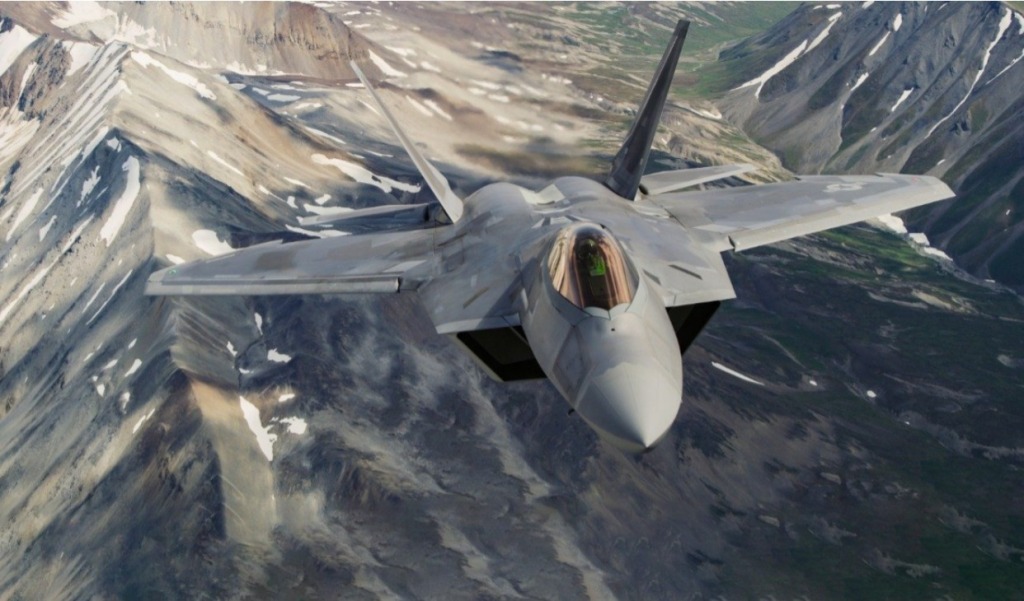
A super cruise-enabled J-20 would be able to stay in high-speed battles for significantly extended periods of time without having to leave the combat and return for refueling, similar to an F-22 Raptor.
However, since Lockheed Martin and the US Air Force have changed the software of the F-22 Raptors in recent years, upgrading J-20 stealth fighter jets to compete with them will be a challenging task for China, according to National Interest.
In the end, these improvements might not be enough to make the J-20 stealth fighter plane really competitive with the F-22 Raptor unless the weapons range and guidance systems can match or outperform it.
Additionally, there is considerable skepticism regarding the upgraded J-20 engine matching the power of the Raptors, let alone rival them.
“The thrust of the J-20 will still lag behind the US F-22 until China delivers the WS-15 engines for the aircraft”, Antony Wong Tong told SCMP.
So, the current upgrade to the J-20 engine with cutting-edge thrust vector technology is in a way, a breakthrough for the J-20s. However, they might need more technological upgrades to be able to rival the most lethal and air-superiority fighter aircraft in the world.
Source: EurAsian Times “Challenging F-22 Raptors, China Plans To Amplify ‘Thrust Vectoring’ Capabilities Of Its J-20 Stealth Fighter Jets”
Note: This is EurAsian Time’s article I post here for readers’ information. It does not mean whether I agree or disagree with the article’s views.
China ‘Unveils’ Series Of Stealth Fighter Jets; Has Beijing Finally Outclassed Its ‘Mentor’ In Aircraft Technology?
Posted: November 4, 2021 Filed under: Uncategorized | Tags: 2-seater J-20, AESA, aircraft engine, BVR missile, China, FC-31, fighter jet, J-11B, J-11D, J-16, J-20, PL-12, PL-15, Russia, Su-35, Su-57, WS-10C, WS-15 3 CommentsBy EurAsian Times Desk- November 3, 2021
China has long been depending on the Russian aviation industry for its fighter jet requirements. However, Beijing’s reliance on Russia could soon be over if the latest photographs of the twin-seat variant of China’s J-20 stealth jets are anything to go by.
As if that were not enough, additional photographs have surfaced on social media showing China’s first carrier-based fighter plane. With these new developments, China appears to have already overtaken its “mentor” Russia.
According to a study published by the Royal United Service Institute (RUSI), a military think tank, China may have already surpassed the Russian warplanes.
The former’s increasing dominance in fighter jets technology is based on different factors such as large military budget, willingness to reverse-engineer existing technology, and cross-applicability of China’s well-developed civilian electronics industry to the manufacturing of advanced avionics.
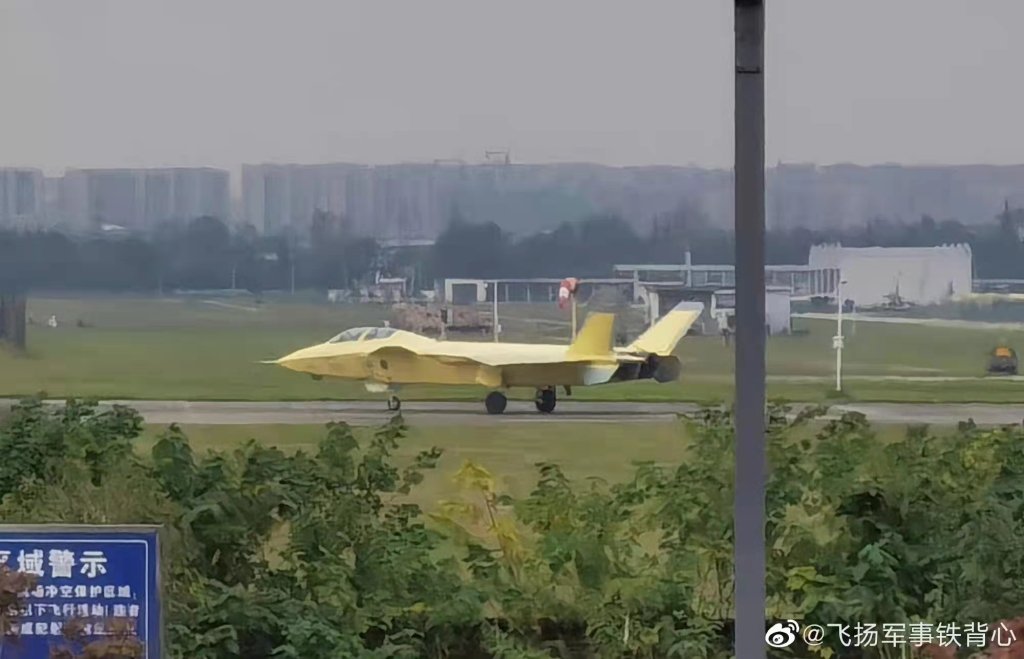
On the contrary, sanctions imposed by the West on Russia have constrained Moscow’s access to components required for high-performance sensors. Chinese aircraft are outpacing their Russian counterparts in terms of design as well.
Are Chinese Jets Better?
Any aircraft’s agility and speed can be improved by reducing its weight. Substituting lightweight composite materials for metal components is one of the most important weight-saving techniques in current aircraft design.
The usage of composites on a large scale can be costly and technologically challenging. Despite this, China is using composites in the J-11B, J-11D, and J-16 fighters, all of which are based on Russian Flankers. As a result, compared to the original Russian jets, the Chinese jets have a better thrust-to-weight ratio.
For its Y-20 “Chubby Girl” transport planes, the Xi’an Aircraft Corporation revolutionized composite technology by 3D-printing composite components and adopting innovative computer-assisted design techniques.
The Active Electronically Scanned Array (AESA) radar is the current gold standard in sensor technology, with more range, higher resolution, and the capacity to sustain numerous tracks than its predecessors. AESA radars are much more difficult to detect, allowing for target searching without revealing one’s position.
China’s J-11B/D, J-15, and J-16 twin-engine fighters, J-10 single-engine fighters, and J-20 stealth aircraft are all equipped with AESAs. Meanwhile, Russia is lacking behind in terms of the operationality of AESA in its Su-57 stealth fighter and MiG-35.
The wide incorporation of AESA radars into recent Chinese designs guarantees that they’ll have better sensor abilities comparable to cutting-edge Western fighters.
Beyond-visual-range (BVR) warfare relies on missiles that can engage opponents at larger distances in addition to sensors and in the past few years, China has begun to deploy two advanced BVR missiles. The first is the PL-12, which has performance comparable to the US AIM-120C missile and outranges the Russian R-77 BVR missile.
FC-31
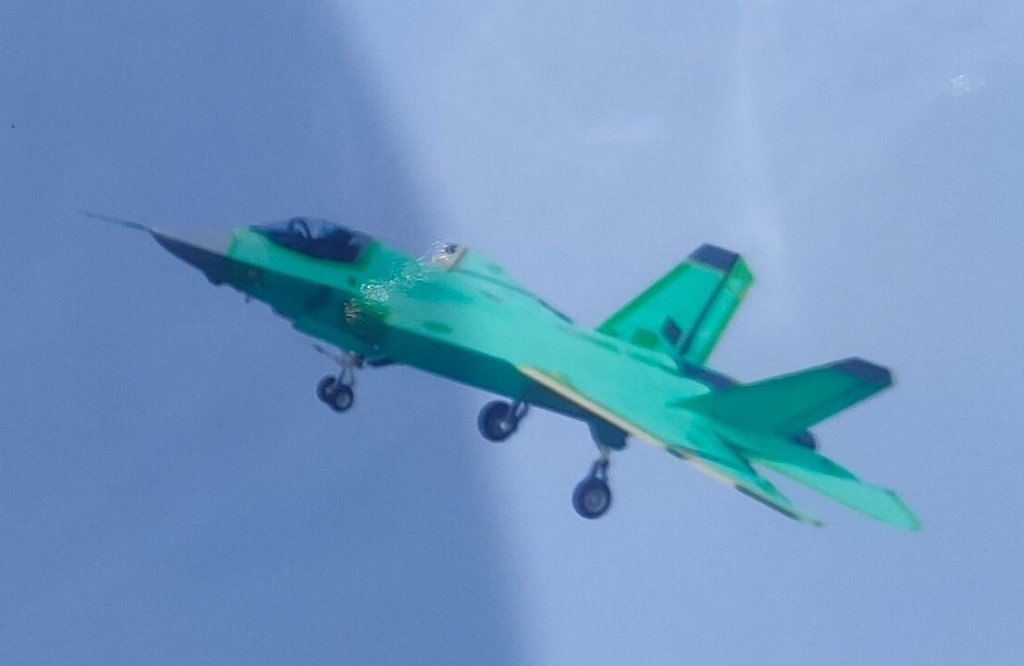
China has also produced the PL-15 missile, which is said to meet or exceed the range of even the most recent US AIM-120D BVR missiles. Meanwhile, Russia has had difficulty deploying adequate numbers of the R-77-1 missile.
RUSI reports suggest that Russia’s short-range R-73 heat-seeking missiles have a superior overall reputation, they lack an infrared imaging sensor that can differentiate aircraft from flare decoys, unlike its Chinese and US counterparts.
Engine technology is one area where China still needs to surpass Russia, Beijing continues to purchase Russian turbofan engines as it tries to develop local alternatives such as the WS-10B and, eventually, the powerful WS-15.
However, as EurAsian Times reported, China’s J-20 ‘Mighty Dragon’, was spotted with a domestically manufactured WS-10C engine at the Zhuhai airshow.
Jet engine technology was one area where China was lagging behind, but now that is almost taken care-off, as Beijing could eventually replace the Russian-made AL-31F turbofans with fully indigenous engines that only a few nations have been able to master.
Source: EurAsian Times “China ‘Unveils’ Series Of Stealth Fighter Jets; Has Beijing Finally Outclassed Its ‘Mentor’ In Aircraft Technology?”
Note: This is EurAsian Times’ article I post here for readers’ information. It does not mean whether I agree or disagree with the article’s views.